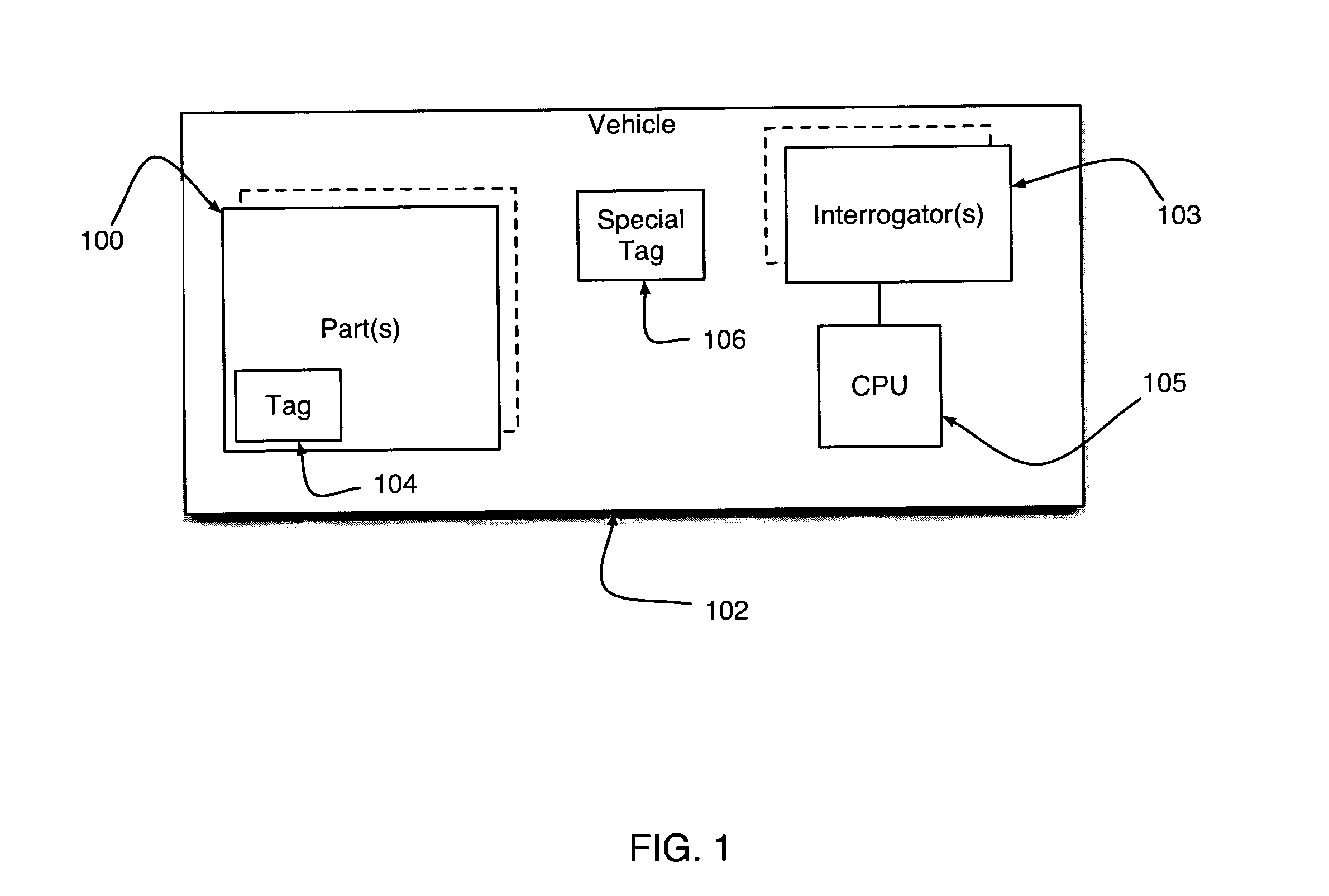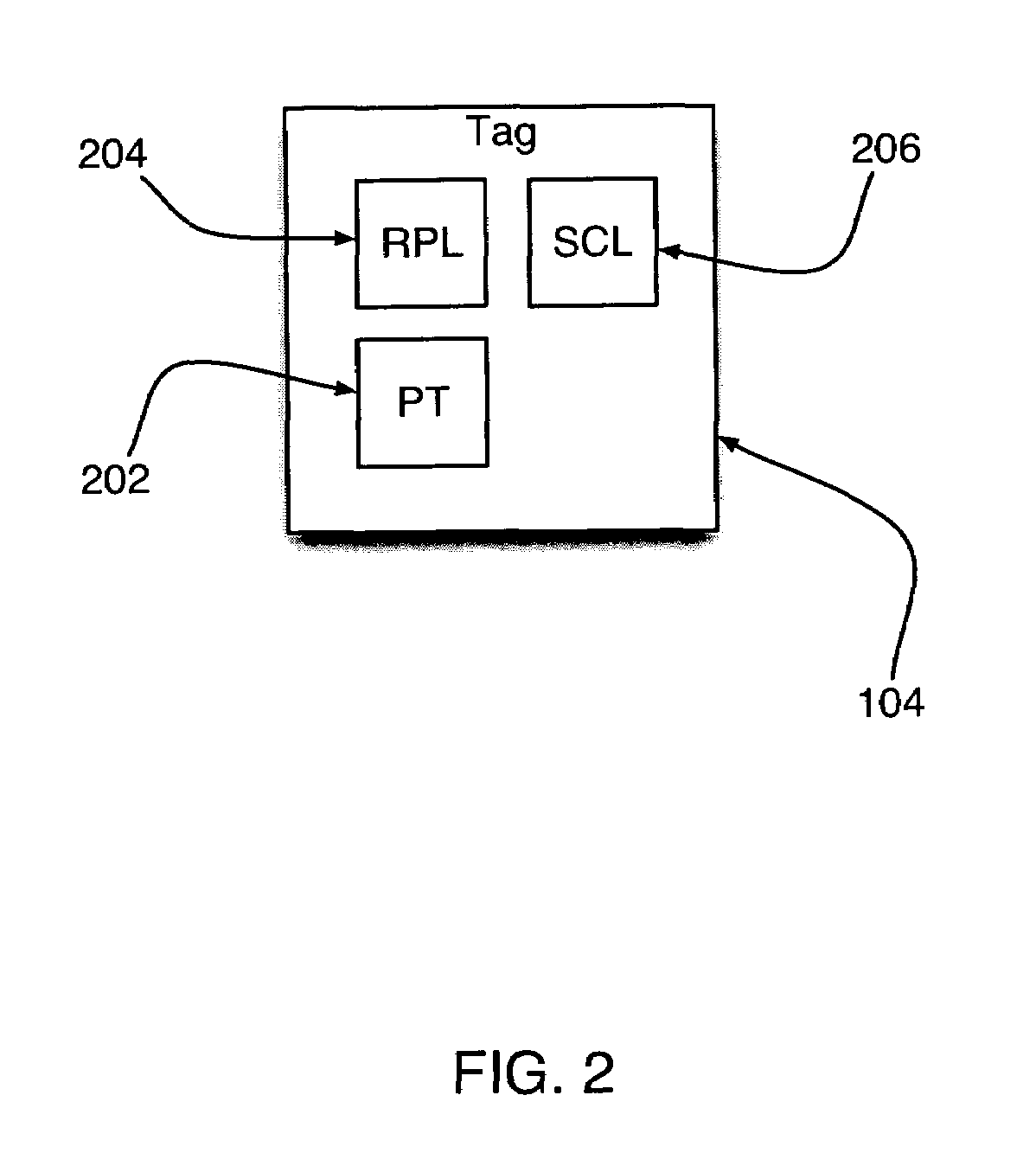Radio frequency identification parts verification system and method for using same
a technology of radio frequency identification and verification system, applied in the direction of alarms, position/direction control, registering/indicating, etc., can solve the problems of inability to keep track of the existence and/or status of thousands of parts, inability to use current systems, time-consuming and difficult tasks,
- Summary
- Abstract
- Description
- Claims
- Application Information
AI Technical Summary
Benefits of technology
Problems solved by technology
Method used
Image
Examples
Embodiment Construction
[0021]The present invention provides a system and method for gathering data concerning parts of vehicles, or any complex structure comprised of multiple mechanical parts, such as a locomotive, diesel engine, etc., and using that data to determine whether the parts are the appropriate parts for use in that structure and for indicating when parts need to be replaced so as to increase the operational safety of the structure. The system is referred to herein as the PVS (Parts Verification System). The PVS uses RFID technology to initially associate data with different parts and to facilitate the identification of those parts in the future. In particular, small, relatively inexpensive RFID tags are placed on, or embedded in, various different parts of a vehicle or structure.
[0022]In the context of a vehicle, although a large number of different parts could be labeled with RFID tags, the preferred embodiment of the present invention is primarily focused on the labeling of replaceable, dis...
PUM
 Login to View More
Login to View More Abstract
Description
Claims
Application Information
 Login to View More
Login to View More - R&D
- Intellectual Property
- Life Sciences
- Materials
- Tech Scout
- Unparalleled Data Quality
- Higher Quality Content
- 60% Fewer Hallucinations
Browse by: Latest US Patents, China's latest patents, Technical Efficacy Thesaurus, Application Domain, Technology Topic, Popular Technical Reports.
© 2025 PatSnap. All rights reserved.Legal|Privacy policy|Modern Slavery Act Transparency Statement|Sitemap|About US| Contact US: help@patsnap.com



